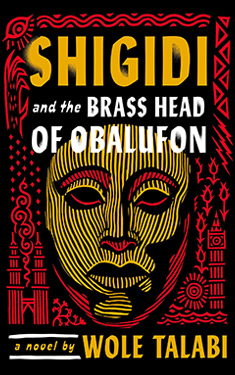Wole Talabi
Completed 8/31/2024, Reviewed 9/1/2024
4 stars
This was an interesting book. It is based in Nigerian mythology as well as a sprinkling of other myths and religions. The story is basically a heist tale, but with lots of world building around the mythology. It made for generally fun book, although, the jumping around of the timelines was a little confusing. And, as usual, it is always fun to get out of Euro-based fantasy. Overall, I really liked the book. It was nominated for 2023 Nebula and British Science Fiction Awards and won the Nommo Award, which is for African Science Fiction and Fantasy.
The story is about Shigidi, a nightmare orisha who works for the Orisha Spirit company. He meets a succubus named Nneoma on one particular assignment. She convinces him to leave the company and join her in eating souls outside of its soul feed distribution. However, the elder gods will have none of that and pursue the two renegades. Then, a high god asks the two of them to steal a Nigerian artifact from the British Museum, via both the natural world and the spirit world.
The plot is pretty simple. What makes the book complex and interesting is becoming familiar with the Orisha pantheon. Some of the gods overlapped form me. Many of them began with the letter O. But their interactions with the main characters were fascinating. The book also jumps around in its timeline. From the activities of the heist, to the making of Shigidi, to the development of the relationship between he and Nneoma, and even a meeting between Alastair Crowley and Nneoma back at the turn of the 20th century. It’s a little confusing at times, but all works together to get you to understand the reason for the heist and what transpires afterwards.
I really liked Shigidi, for the most part. I wasn’t always immersed in his character, empathizing with his situation. I think part of it was the jumping around of the timeline. The POV also changes a lot, between him and Nneoma, as well as the high god who runs a board meeting of the Orisha company. But overall, I found him fascinating, especially when Nneoma teaches him to manipulate the clay from which he’s made. I also like Nneoma. Despite the misogynistic connotations of the succubus motif, she was a very well-developed character that had purpose and self-respect.
I can see why this book was nominated for awards. The prose was terrific and the world building phenomenal for a mythology that’s not very well known. I give this book four stars out of five. I also give props to the author for being able to describe a massively supernatural ending well enough that I followed the wonder of the scene easily despite the noise of reading in airports and on airplanes. It kept me engaged and intrigued.

No comments:
Post a Comment